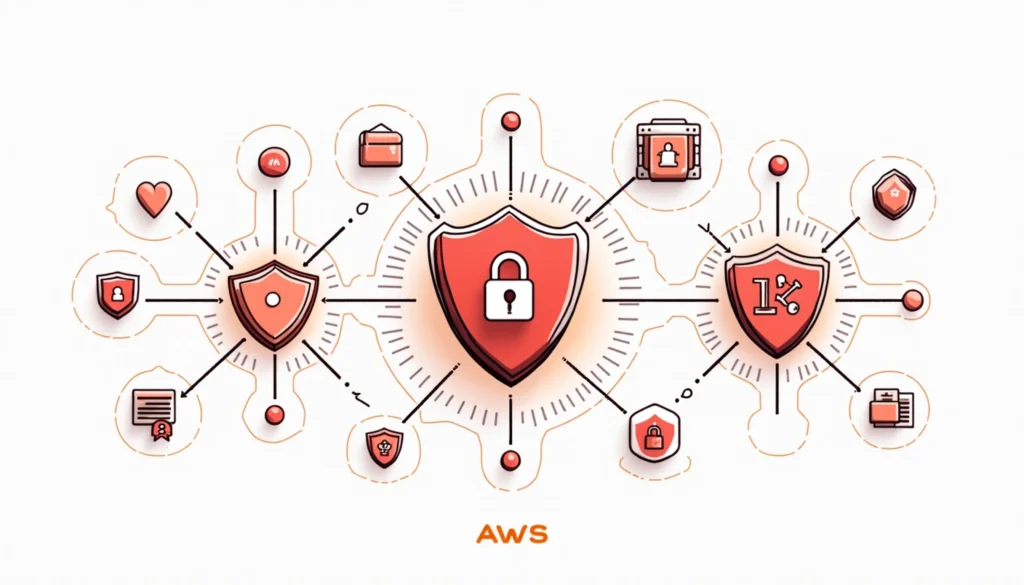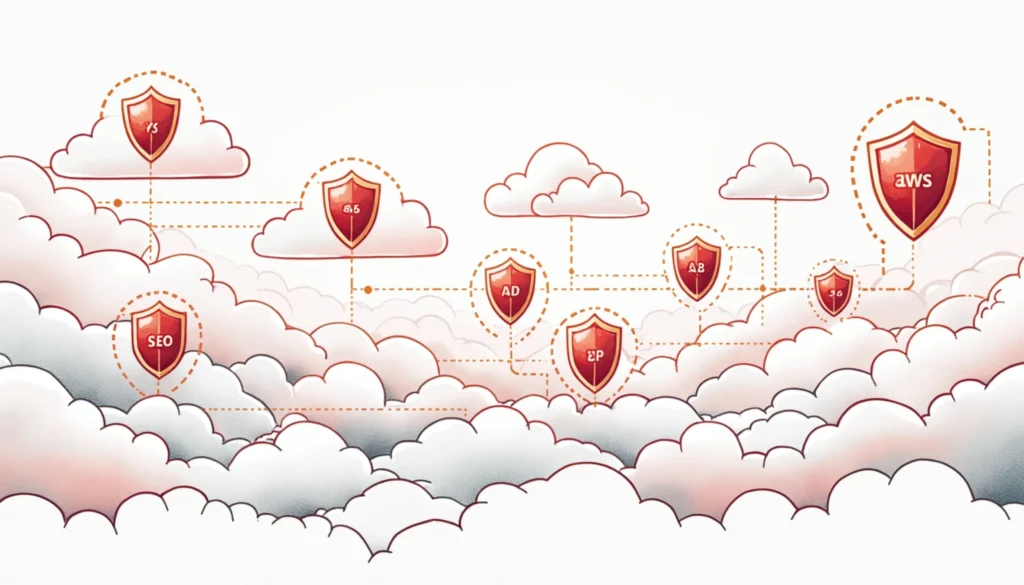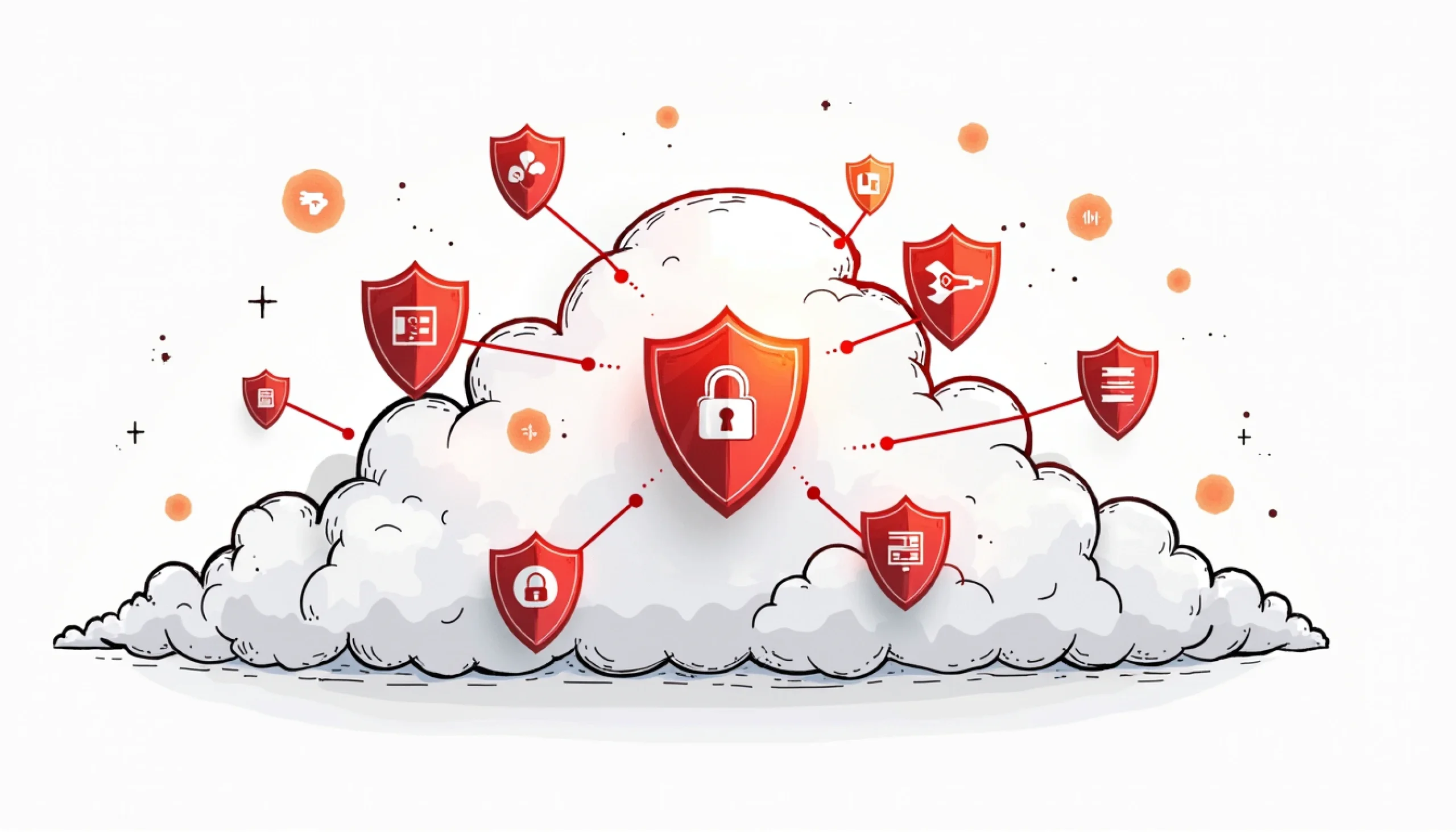In today’s digital landscape, ensuring the safety and security of data stored in the cloud has become paramount for organizations worldwide. With the increasing number of cloud-based threats and vulnerabilities, adopting a comprehensive approach to cloud security management is essential. Amazon Web Services (AWS) provides a robust suite of security management services designed to help businesses optimize their cloud security and mitigate risks effectively. This article explores the critical elements of AWS security management services, best practices, and advanced techniques to enhance your cloud safety.
Understanding the Importance of Cloud Safety
Cloud security involves protecting sensitive data, applications, and infrastructure from malicious attacks and unauthorized access. As more organizations migrate to the cloud, recognizing the inherent risks associated with cloud computing becomes crucial.

One of the foremost concerns in cloud safety is data security and privacy. Organizations handle vast amounts of personal and sensitive information, making them attractive targets for cybercriminals. Ensuring that this data remains protected is not just a regulatory requirement; it’s a fundamental responsibility. The implications of a data breach can be severe, leading to financial losses, reputational damage, and legal consequences. Implementing robust security services is crucial for maintaining customer trust and safeguarding business integrity.
Additionally, the dynamic nature of AWS environments introduces complexities that can further complicate security efforts. With resources being provisioned and de-provisioned frequently, organizations must adopt a proactive approach to security management. This means not only deploying the right security tools but also fostering a culture of security awareness among employees, as human error remains one of the leading causes of data breaches.
The Role of AWS in Cloud Security
AWS serves as a leading cloud services provider, offering robust security tools and features to ensure the safety of its user’s data and applications. AWS operates under a shared responsibility model, wherein Amazon takes responsibility for the infrastructure, while customers are responsible for securing their applications and data.
This division of responsibilities allows organizations to utilize advanced AWS security services while focusing on their core business operations. AWS continually invests in improving its security features and protocols, enhancing cloud security for all users. For instance, AWS provides services such as AWS Identity and Access Management (IAM) and AWS Key Management Service (KMS), empowering organizations to manage user permissions and encryption keys effectively. These tools streamline access management processes and enable compliance with various industry regulations.
Key Concepts in Cloud Security
Understanding key concepts in cloud security is essential for efficiently managing security on AWS. Fundamental concepts include encryption, access control, and monitoring.
Encryption
Encryption secures data by converting it into a coded format that can only be accessed by authorized users. AWS offers services like AWS Key Management Service (KMS) and AWS Certificate Manager to facilitate encryption both at rest and in transit, ensuring sensitive information remains protected regardless of its state.
Access Control
Implementing strict access control measures ensures that only authorized personnel have access to sensitive data and applications. AWS IAM and AWS Resource Access Manager are essential tools that help organizations define user roles and permissions clearly, minimizing the risk of unauthorized access.
Monitoring
Continuous monitoring helps organizations identify unusual activities and potential threats in real time. Utilizing tools like AWS CloudTrail, Amazon GuardDuty, and AWS Security Hub allows businesses to track user activity and system performance, enabling swift responses to any anomalies.
By grasping these concepts, organizations can better navigate the complexities of cloud security and make informed decisions when utilizing AWS security services. Integrating these practices into a comprehensive security strategy not only enhances protection but also aligns with best practices in the ever-evolving landscape of cybersecurity. As threats grow in sophistication, staying informed and adaptable is key to maintaining a secure AWS environment.
AWS Security Management Services Explained
AWS offers a variety of security management services that enable organizations to enhance their cloud security posture significantly. These services are tailored to support various security needs, simplifying the security management process.

Overview of AWS Security Management Services
Some key AWS security management services include:
- AWS Identity and Access Management (IAM): Manage user access and permissions effectively.
- AWS CloudTrail: Provides auditing and logging capabilities that track user activity and resource changes.
- Amazon GuardDuty: Enhances threat detection using machine learning to identify potential threats.
- AWS Security Hub: Offers a centralized view of your security posture, aggregating security findings from various AWS services and third-party tools.
- AWS Shield: Provides protection against Distributed Denial of Service (DDoS) attacks.
- AWS Web Application Firewall (WAF): Protects web applications from common web exploits.
- AWS Firewall Manager: Simplifies firewall administration across multiple accounts and resources.
- AWS Config: Enables assessment, audit, and evaluation of the configurations of your AWS resources.
- AWS Secrets Manager: Helps you protect secrets needed to access your applications, services, and IT resources.
- AWS Key Management Service (KMS): Allows you to create and control encryption keys used to encrypt your data.
- AWS Network Firewall: Provides essential network protections for Amazon Virtual Private Cloud (VPC).
- AWS Control Tower: Automates the setup of a baseline environment for secure multi-account AWS deployments.
- AWS Directory Service: Enables directory-aware workloads and AWS resources to use managed Active Directory in the AWS Cloud.
- AWS CloudHSM: Offers cloud-based hardware security modules to easily generate and use your own encryption keys.
- AWS Inspector: Automates security assessments to improve the security and compliance of applications.
Each service plays a specific role in ensuring comprehensive cloud security.
Features and Benefits of AWS Security Management Services
The features and benefits of AWS security management services are vast and varied. Key advantages include:
- Scalability: AWS solutions are designed to scale with your business, accommodating growing data and application needs.
- Real-time Monitoring: Continuous monitoring and alerts allow organizations to respond to threats swiftly.
- Cost-effectiveness: Utilizing AWS tools can reduce operational costs by automating various security tasks.
- Compliance Support: AWS provides a robust set of compliance certifications and frameworks, such as GDPR, HIPAA, and PCI DSS.
By leveraging these services, organizations can fortify their security frameworks while remaining agile and responsive to changing threats. The extensive documentation and community support available for AWS security services empowers organizations to implement security measures effectively.
Steps to Optimize AWS Cloud Safety
Optimizing cloud safety requires a proactive approach involving various steps that organizations should implement consistently. By following these recommendations, businesses can significantly reduce their security risks.
Identifying Potential Security Risks
The first step is conducting a thorough risk assessment. Understanding your organization’s unique vulnerabilities allows for the development of targeted security strategies. Common security risks include unpatched software, misconfigured services, and inadequate access controls. Identifying these risks enables organizations to prioritize their security efforts effectively.
Implementing AWS Security Best Practices
After identifying potential risks, implement AWS security best practices:
- Enforce strong password policies and use multi-factor authentication.
- Regularly review and adjust user permissions using AWS IAM.
- Adopt encryption for sensitive data with AWS KMS and AWS Secrets Manager.
- Regularly update software and apply security patches using AWS Systems Manager.
- Create incident response plans and conduct regular drills.
Documenting these practices and incorporating them into daily operations helps create a culture of security within the organization, enhancing the overall security posture.
Advanced AWS Security Management Techniques
Once foundational security measures are in place, explore advanced AWS security management techniques to further enhance cloud safety. These techniques involve leveraging specialized tools and automating security tasks.
Using AWS Security Tools and Services
AWS offers numerous security tools that can optimize security management efforts:
- AWS Config: Continuously monitors and records your AWS resource configurations.
- AWS Security Hub: Provides a comprehensive view of high-priority security alerts and compliance status.
- AWS Firewall Manager: Centralizes administration and maintenance of firewall rules across accounts.
- AWS WAF: Protects web applications from common web exploits.
Utilizing these tools allows organizations to assess their security status continuously and take immediate action when risks arise, maintaining a robust AWS environment.
Automating Security Tasks with AWS
Automation minimizes manual processes and reduces the risk of human error. AWS provides several automation capabilities:
- AWS Lambda: Automates responses to security events for quick incident resolution.
- AWS Systems Manager: Streamlines patch management and configuration compliance.
- AWS CloudFormation: Automates resource provisioning and management using templates.
These services enable efficient management of security tasks, allowing teams to focus on strategic initiatives.
Maintaining and Updating Your AWS Security Measures
Cloud security is an ongoing process requiring regular updates and maintenance. Organizations must remain vigilant in adapting to emerging threats and changes in the cloud environment.

Regular AWS Security Audits
Conducting regular security audits evaluates the effectiveness of security measures and identifies areas for improvement. Audits should review:
- Access logs and user activities.
- Compliance with security policies and regulatory requirements.
- The status of implemented security controls.
Engaging in periodic audits ensures your AWS environment remains secure against evolving threats.
Staying Updated with AWS Security Enhancements
AWS continually releases updates and improvements to their security services. Staying informed about these enhancements maximizes security capabilities. Organizations can:
- Subscribe to AWS security bulletins.
- Attend webinars and training sessions.
- Participate in AWS community forums.
Embracing these updates ensures organizations maintain a robust security posture while evolving alongside technological advancements.
Additional AWS Security Services to Consider
To further bolster your cloud security, consider integrating additional AWS services:
- AWS Cognito: Adds user sign-up, sign-in, and access control to web and mobile apps.
- AWS Resource Access Manager: Shares AWS resources with other AWS accounts or within your AWS Organization.
- AWS Marketplace: Offers third-party security solutions that can complement AWS services.
- AWS VPC Security Groups: Acts as a virtual firewall for your instance to control inbound and outbound traffic.
- AWS Config Rules: Evaluate whether your AWS resource configurations comply with internal practices.
Incorporating these services enhances various aspects of your security framework, from identity management to network protection.
Comparing AWS with Other Cloud Providers
While AWS offers a comprehensive suite of security services, understanding how it compares with other cloud providers like Microsoft Azure can be beneficial.
- Azure Security Center: Similar to AWS Security Hub, it provides unified security management and advanced threat protection.
- Microsoft Defender for Cloud: Offers threat protection for workloads running in Azure, on-premises, and in other clouds.
Understanding the similarities and differences helps organizations choose the best tools for their specific needs and integrate multi-cloud security strategies if necessary.
Leveraging AWS Managed Services
For organizations seeking to offload the operational complexities of managing AWS infrastructure, AWS Managed Services can be a viable option. These services provide ongoing management of your AWS infrastructure so you can focus on your applications.
Futuralis, as an AWS Advanced Tier Partner, specializes in providing managed services, including security and cost optimization. Partnering with an AWS Partner helps you navigate the complexities of AWS security management services, ensuring best practices are followed, and your infrastructure is optimized for performance and security.
Conclusion
Optimizing cloud safety requires a comprehensive understanding of AWS security management services, a proactive approach to risk assessment, and a commitment to ongoing improvement. By utilizing AWS’s array of security tools and adhering to best practices, organizations can safeguard their AWS environments and protect sensitive data from potential threats.
Ready to elevate your cloud security and harness the full power of AWS? Futuralis is here to guide you every step of the way. As an AWS Advanced Tier Partner, we specialize in cloud migrations, modernization, and managed services, including security and cost optimization. Our mission is to empower startups and SMBs by providing personalized, secure, and scalable solutions that grow with your business. Don’t let high costs, complexity, or security concerns hold you back. Experience our white-glove service and unlock your full potential. Talk to an AWS Expert Today and take the first step towards a more secure and efficient cloud environment.



